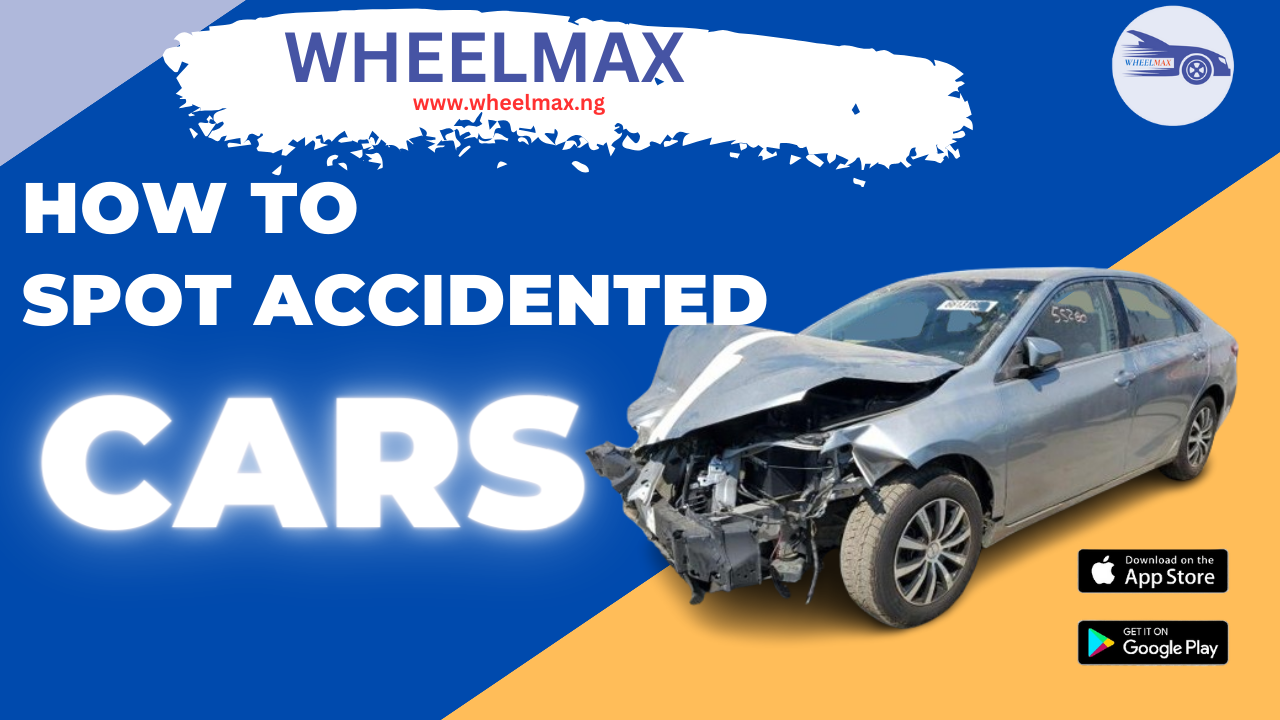How to Identify Accidented Cars: A Guide for Savvy Buyers
Buying a used car can be exciting, but it's crucial to be cautious and ensure you're getting a good deal on a vehicle in good condition. One major concern for many buyers is the possibility of purchasing a car that has been involved in an accident, potentially leading to hidden problems and safety concerns.
While professional inspections are always recommended, here are some tips to help you identify potential accident damage yourself:
1. Check the Vehicle History Report:
This is the most efficient way to gain insight into the car's past. Services like CarFax or AutoCheck provide reports detailing accidents, repairs, and ownership history for a fee. Depending on where you are located, you may not have access to these records for free. However, there are some free places to run a VIN scan for free such as www.vincheck.info, www.vindecoded.com and www.freevindecoder.eu
2. Scrutinize the Bodywork:
Uneven paintwork is a red flag. Look for mismatched colors, clear coat differences, or orange peel texture. Run your hand lightly along the body panels, feeling for bumps, ripples, waviness or unevenness that could indicate poorly repaired damage. Also check the frames under the hood for uneven welds and different colors.
3. Inspect Panel Gaps and Alignment:
Uneven gaps between doors, hoods, trunks, and fenders can signify misaligned parts or repairs. Although some panel gaps could come from years of use or from poorly made parts by the manufacturer, major misalignments are always a red flag. Look closely at the headlights, taillights, and other body components to ensure they are level and symmetrical.
4. Examine the Paint:
Overspray on adjacent panels or different shades of paint on the same panel can indicate repairs. Look for signs of repainting, like overspray on nearby parts (e.g., trim, rubber seals) or mismatched textures.
5. Check for Mismatched Parts:
Replacement parts, especially those with different textures or colors, could indicate repairs. Be wary of mismatched bolts, screws, or welding marks on various components.
6. Look for Overspray or Paint Transfer:
Overspray on the inner parts of the car (e.g., door jambs, engine bay) could signify repairs. Additionally, paint transfer on adjacent parts like the undercarriage or tires might indicate past collisions.
7. Inspect the Frame:
While a more complex check, look for signs of bending, warping, or misaligned parts in the car's frame. This can be crucial for structural integrity and future safety.
8. Be Wary of Uneven Tire Wear:
Uneven tire wear patterns can indicate alignment issues, which could be a result of previous accident damage. Check for excessive wear on one side of the tire compared to the other.
9. Test the Doors and Hood:
Open and close the doors, hood, and trunk. They should operate smoothly and close securely with even gaps. Listen for any unusual sounds or grinding during operation.
10. Trust Your Gut:
If something feels off about the car, walk away. It's better to be safe than sorry, especially when dealing with a significant investment like a car.
Remember, these tips are a starting point, and a professional inspection is always recommended for a thorough evaluation. By being attentive and informed, you can increase your chances of finding a reliable and safe used car.
Also, you may want to note that a car having been in an accident does not mean that it’s a write off. Some minor accidents may not cause critical damage to the car or compromise the structural integrity of the car. The idea is to know what you are getting into to avoid surprises.
